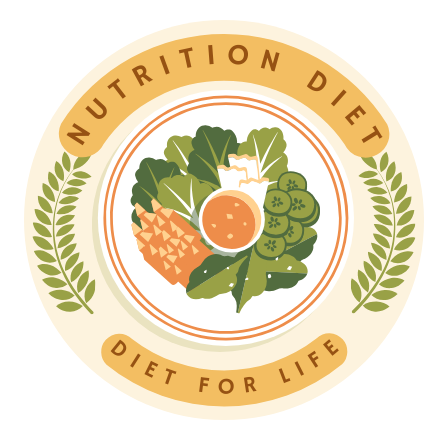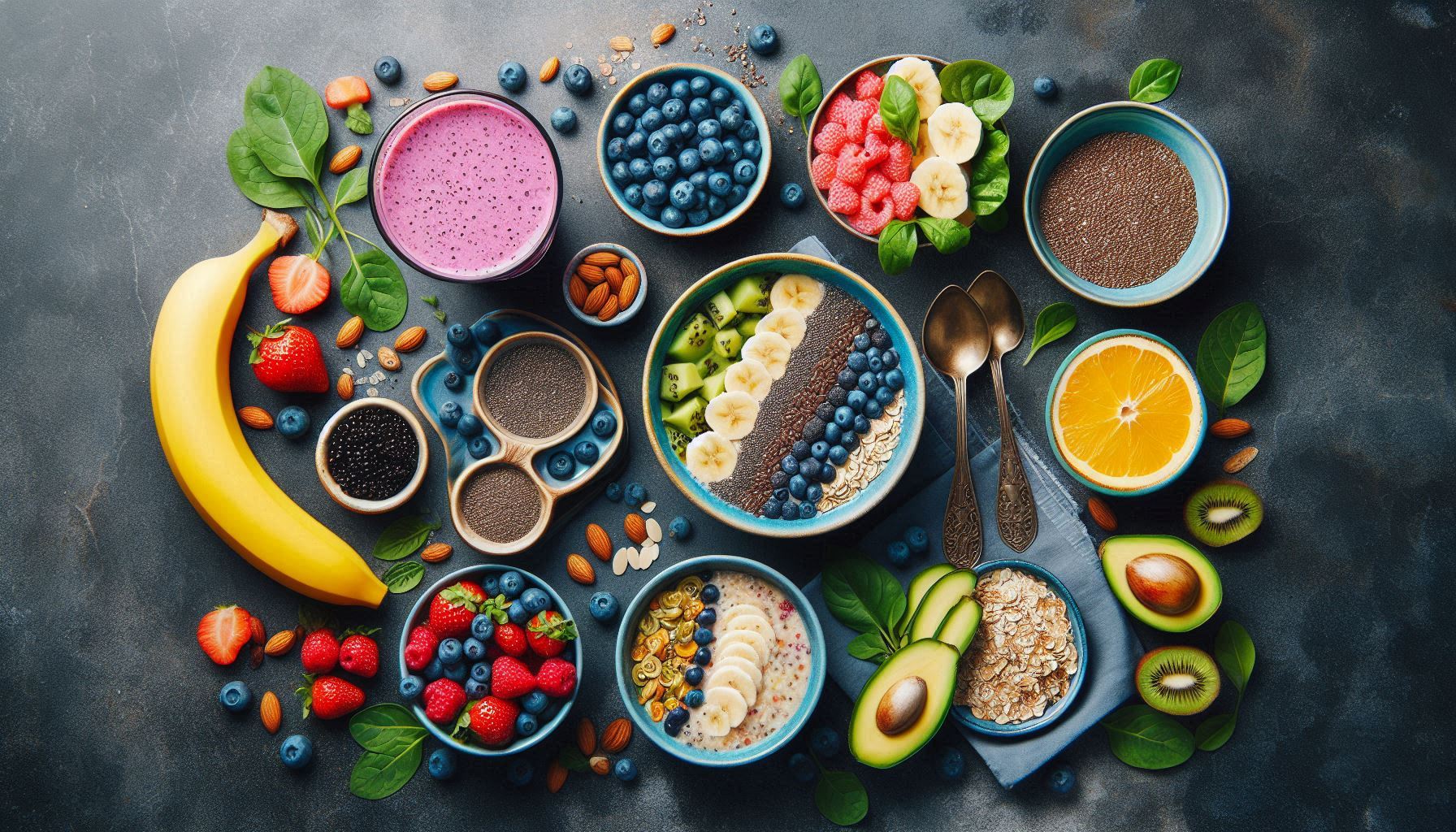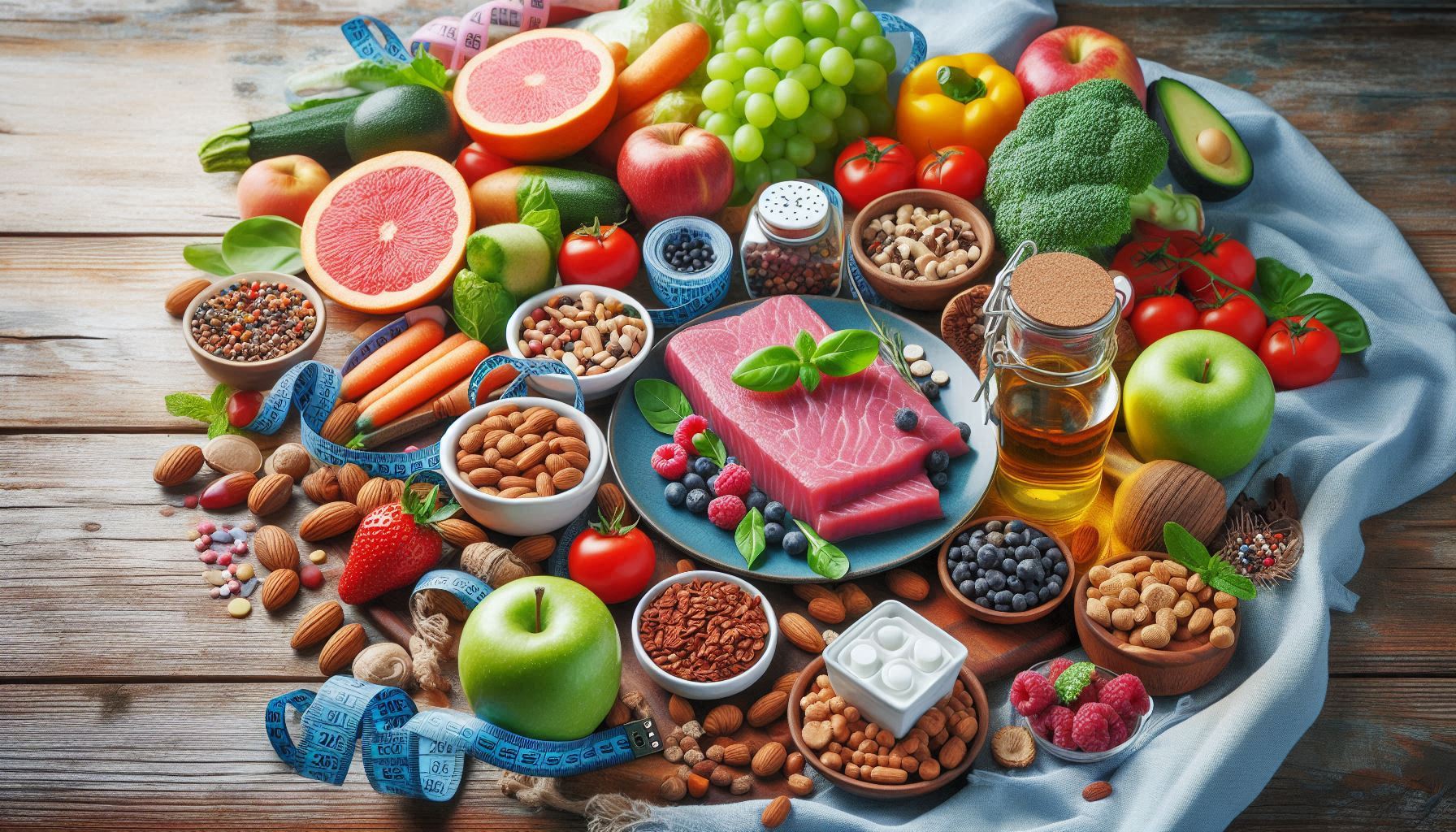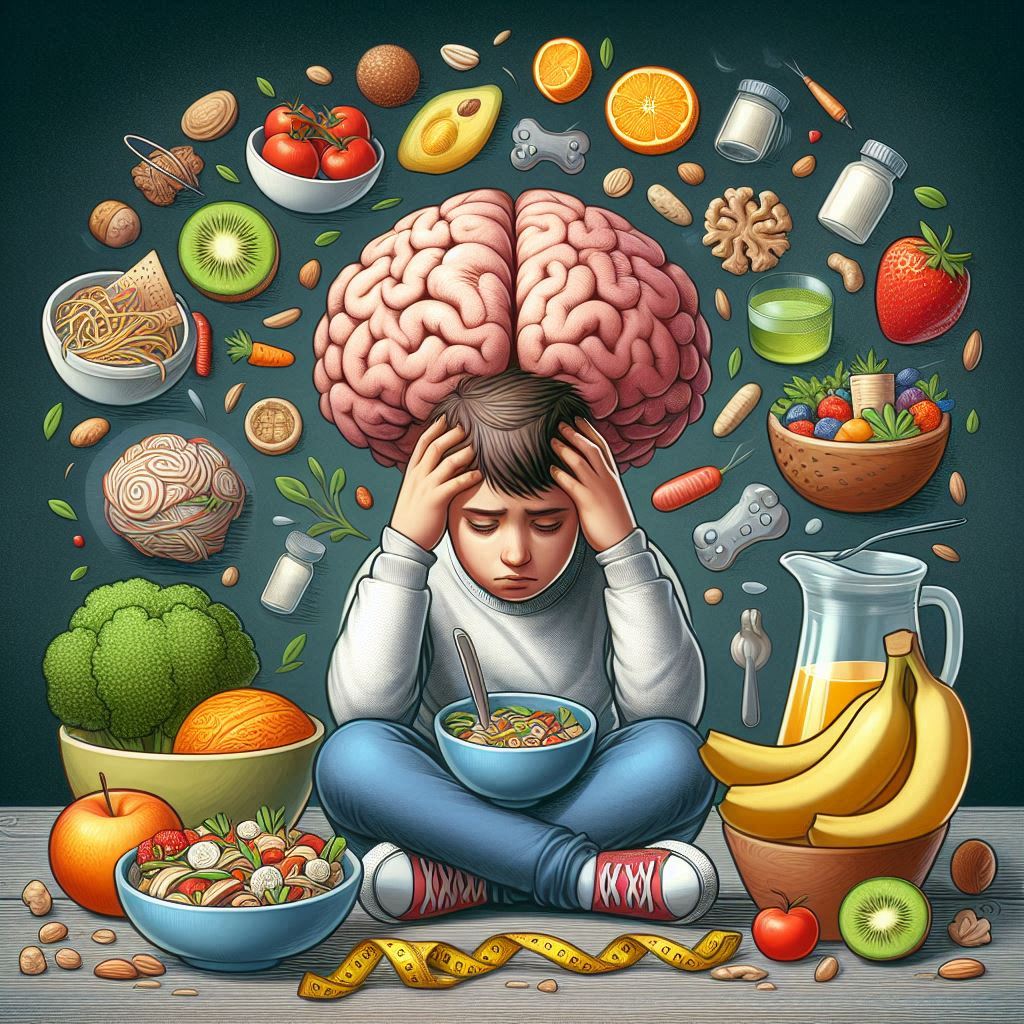Super foods are not just a marketing buzzword—they are nutrient-dense powerhouses recognized for their exceptional concentrations of vitamins, minerals, antioxidants, fiber, and phytochemicals. While there is no universally accepted scientific definition of a “super food,” the term is widely embraced by nutritionists, researchers, and culinary professionals to describe foods with a superior nutrient-to-calorie ratio and a wide range of functional health benefits.
These foods go far beyond basic nutrition. Many super foods offer anti-inflammatory properties, help to regulate blood sugar, support immune function, and contribute to cardiovascular and brain health. From antioxidant-rich berries to omega-3-loaded seeds, or detoxifying greens to ancient grains, each super food plays a unique role in supporting physiological resilience, metabolic balance, and long-term vitality.
Integrating super foods into your daily routine is not about adhering to restrictive diets or chasing fads—it’s about making conscious, empowering choices that align with your body’s needs. Whether you are a busy professional needing sustained energy, a student seeking mental clarity, an athlete focused on recovery, or simply someone committed to preventive health, super foods offer a practical and delicious way to enhance overall wellness.
What makes super foods particularly valuable is their versatility. They can be seamlessly woven into meals and beverages across the entire day. You might start your morning with a chia and blueberry smoothie, enjoy a quinoa and kale salad with avocado for lunch, snack on almonds and dark chocolate, and wind down with a warming lentil stew flavored with turmeric and ginger. These small, daily inclusions compound over time, supporting your gut health, immune defenses, energy levels, and mental performance.
Moreover, many super foods are rooted in traditional healing systems, such as African, Ayurveda, or Indigenous food ways, reminding us that eating well can also be a way to honor ancestral knowledge and support sustainable agriculture. With the rise of global interest in foods like mooring, baobab, spiraling, and tiff, we are witnessing a nutritional renaissance—one that combines ancient wisdom with modern science.
Ultimately, adopting super foods is not about perfection—it’s about consistency, curiosity, and care. By consciously choosing ingredients that deliver more nutrition per bite, you empower your meals to become tools of transformation. In a world where health is often compromised by stress, pollution, and poor diet, super foods offer a simple yet powerful strategy to reclaim your vitality—one meal at a time.
Morning Fuel – Super food-Powered Breakfasts
The first meal of the day sets the tone for energy, metabolism, and mental clarity. Incorporating super foods at breakfast can prevent mid-morning crashes and enhance focus.
- Oats and Quinoa Bowls
- Super foods to include: Chia seeds, flaxseeds, blueberries, go berries, hemp seeds, cinnamon
- Why: Rich in fiber, omega-3s, and antioxidants
- Example Meal: Overnight oats with almond milk, chia seeds, cinnamon, topped with blueberries and go berries
- Green Smoothies
- Super foods to include: Spinach, kale, spiraling, match, avocado, banana
- Why: High in chlorophyll, iron, vitamins A, C, E, and phytonutrients
- Example Recipe: Blend spinach, frozen banana, avocado, almond milk, and match powder
- Super food Yogurt Parfait
- Super foods to include: Greek yogurt, bee pollen, acai powder, walnuts, pumpkin seeds, kiwi
- Why: Supports gut health, immune function, and delivers sustained energy
- Turmeric & Ginger Golden Milk
- Super foods to include: Turmeric, ginger, black pepper, coconut milk
- Why: Anti-inflammatory and digestive benefits
Pro Tip: Prepare smoothie packs ahead of time by combining frozen super food ingredients in bags for quick blending.
Midday Power – Nutrient-Rich Lunch Options
Lunch is a critical refueling opportunity. Strategic super food additions support sustained energy and cognitive performance.
- Super food Salads
- Super foods to include: Kale, quinoa, avocado, pomegranate seeds, almonds, olive oil, chickpeas
- Example Recipe: Massaged kale salad with quinoa, roasted chickpeas, avocado, lemon-tahini dressing, and pomegranate seeds
- Whole-Grain Bowls
- Super foods to include: Brown rice, black beans, fermented veggies (kimchee), broccoli, sesame seeds
- Why: Offers prebiotics, fiber, and micronutrients
- Wraps with a Twist
- Super foods to include: Sprouted grain wraps, hummus, red cabbage, arugula, sunflower seeds
- Why: Nutrient-dense with healthy fats and plant-based protein
- Soup Boosters
- Add powders or seeds to soups and stews: spiraling, nutritional yeast, turmeric
Afternoon Boost – Snacks and Teas That Heal
The afternoon slump is real, but super foods can prevent energy dips and poor snacking choices.
- Energy Balls
- Ingredients: Medrol dates, cacao, flaxseed, chia, almond butter, mace powder
- Why: Adapt genic and energizing without caffeine crashes
- Trail Mix
- Super foods: Walnuts, pumpkin seeds, dried cranberries, mulberries, dark chocolate (85%+)
- Adapt genic Teas and Elixirs
- Examples: Ashwagandha tea, rishi lattes, Tulsa (holy basil) infusions
- Benefits: Stress relief, adrenal support, improved focus
- Veggie Chips with Hummus
- Use baked kale, beet, or sweet potato chips with hummus enhanced with garlic and turmeric
Evening Nourishment – Supercharged Dinner Dishes
Dinner is more than just the final meal of the day—it’s an opportunity to nourish the body deeply, encourage restorative processes, and set the tone for quality sleep. After a full day of physical exertion and mental stimulation, the body requires replenishment, not just in calories, but in micronutrients, healthy fats, phytonutrients, and bioavailable protein. Evening meals should ideally be grounding, soothing to the digestive system, and rich in slow-releasing energy sources that stabilize blood sugar and support overnight repair.
Super foods shine particularly well in the evening when they’re gently cooked, stewed, or roasted. The body is most receptive to warm, nutrient-dense meals during this time, especially those that support gut health, inflammation reduction, muscle recovery, and brain detoxification. The following sections explore thoughtfully curated super food-based dinner strategies that are as flavorful as they are functional.
1. Grain & Legume-Based Power Meals
Featured Super foods:
- Lentils, faro, sweet potatoes, shiitake mushrooms
Why It Works:
These meals bring together complex carbohydrates, plant-based protein, and bioactive compounds known to support metabolic function, immunity, and even cancer prevention. Legumes like lentils offer soluble fiber that nourishes gut flora and balances cholesterol, while grains like faro provide magnesium, B vitamins, and zinc, supporting overnight cell repair. Sweet potatoes are rich in beta-carotene, which is converted into vitamin A—a key player in immune support and skin health. Shiitake mushrooms contain lantana, a polysaccharide with notable anti-tumor and immune-boosting properties.
Dish Ideas:
- Faro-lentil pilaf with roasted garlic and caramelized onions, served alongside roasted turmeric-glazed sweet potatoes
- Sweet potato and lentil stew with shiitake mushrooms, kale, and coconut milk
- Stuffed bell peppers with faro, mushrooms, black lentils, and fresh herbs
Functional Benefits:
These meals are satiating but won’t overload the digestive system, making them ideal for a dinner that promotes satiety without heaviness. The slow-digesting carbs help regulate overnight blood sugar levels, improving sleep quality and reducing nighttime cortisol spikes.
2. Roasted Veggie Medleys with Anti-Inflammatory Power
Featured Super foods:
- Brussels sprouts, cauliflower, red bell peppers, cold-pressed olive oil, turmeric
Why It Works:
Cruciferous vegetables like Brussels sprouts and cauliflower are rich in sulforaphane, a potent detoxifying and anti-cancer compound. Red bell peppers are packed with vitamin C, important for collagen production and immune function. Turmeric, when activated with black pepper and healthy fats like olive oil, acts as a powerful anti-inflammatory agent, ideal for reducing systemic inflammation accumulated throughout the day.
Dish Ideas:
- Roasted Brussels sprouts and cauliflower with garlic, turmeric, and tahini drizzle
- Spiced veggie tray bake featuring bell peppers, red onions, and cauliflower with a cumin-honey glaze
- Golden turmeric-roasted root vegetables with lemon zest and hemp seeds
Functional Benefits:
These dishes are rich in antioxidants and anti-inflammatory compounds, ideal for supporting liver detoxification and joint health. Roasting vegetables also enhances the bioavailability of fat-soluble nutrients, while the fiber content aids in overnight digestive motility and detox support.
3. Omega-3 Rich Plates for Brain and Heart Health
Featured Super foods:
- Wild salmon, chia seeds, quinoa, steamed cruciferous greens (broccoli, kale)
Why It Works:
Evening meals that include omega-3 fatty acids, particularly EPA and DHA, are instrumental in reducing inflammation, supporting neural regeneration, and promoting cardiovascular health. Wild salmon is one of the most bioavailable sources of these fatty acids, while quinoa and cruciferous greens provide complementary amino acids and minerals. Quinoa, in particular, is a complete protein, meaning it contains all nine essential amino acids, which is especially beneficial for overnight muscle repair and recovery.
Dish Ideas:
- Grilled wild salmon with lemon-herb quinoa and steamed broccoli
- Chia-crusted salmon served with kale sautéed in garlic and avocado oil
- Baked salmon over a bed of quinoa, dressed with olive oil, dill, and roasted red peppers
Functional Benefits:
The fatty acids in these dishes aid in producing melatonin, improving sleep quality. Omega-3s also contribute to neuroplasticity and cognitive function, making these meals excellent choices for those recovering from burnout, stress, or high mental workload.
4. Miso & Seaweed-Based Soups: Gentle Gut Rejuvenation
Featured Super foods:
- Miso, wake seaweed, shiitake mushrooms, book Choy, garlic, ginger
Why It Works:
Miso, a fermented soybean paste, is naturally rich in probiotics and B vitamins, offering digestive and metabolic support. Seaweeds like wake contain iodine, essential for thyroid function, as well as polysaccharides that feed beneficial gut bacteria. Garlic and ginger enhance the soup’s antimicrobial and anti-inflammatory properties, while shiitake mushrooms and book Choy round out the dish with fiber, foliate, and iron.
Dish Ideas:
- Traditional miso soup with wake, tofu, green onions, and shiitake mushrooms
- Bok Choy and ginger broth with garlic, sesame oil, and miso paste
- Undo noodle soup in a dash-miso broth with seaweed, shiitake, and a soft-boiled egg
Functional Benefits:
Soups like these are gentle on the digestive system, help to replenish electrolytes, and provide prebiotic and probiotic synergy, making them ideal for evening consumption, particularly after a heavy lunch or on recovery days. Warm broths also stimulate parasympathetic nervous activity, enhancing relaxation and preparing the body for deep sleep.
5. Optional Additions and Functional Enhancers
To elevate these dishes further, consider integrating the following:
- Fermented vegetables (e.g., kimchee, sauerkraut) to complement roasted dishes with probiotics
- Bone broth as a base for grains or soups, rich in collagen and gut-healing compounds
- Adaptogens like ashwagandha or rishi powder in sauces, broths, or teas to promote stress resilience
- Seeds and nuts such as pumpkin seeds (zinc, magnesium) or hemp hearts (protein, omega-3) as garnishes
Evening Super food Strategy
Dinner should not be rushed or treated as a nutritional afterthought. Instead, it’s an opportunity to wind down, reconnect with the body, and nourish cellular recovery. By prioritizing super foods in the evening, you align your meals with the body’s circadian rhythms, enhancing nighttime detoxification, hormonal balance, and immune modulation.
Choosing cooked or lightly steamed preparations over raw foods in the evening can also optimize digestion, particularly for those with slower nighttime metabolism. Warm meals signal safety and calm to the body, improving digestion and nutrient assimilation.
The key is consistency, not perfection. You don’t need to overhaul your entire diet overnight. Begin by upgrading just one or two elements—swap white rice for quinoa, or add turmeric to roasted vegetables—and gradually build a routine around whole, nutrient-rich super foods that support your body’s overnight repair processes.
Nighttime Wind-Down – Restorative Treats and Sips
Closing your day with relaxing super foods can improve sleep and overnight recovery.
- Chamomile or Rishi Tea
- Calms the nervous system, supports immune response
- Magnesium-Rich Snacks
- Dark chocolate with almonds, banana with nut butter
- Golden Moon Milk
- Warm milk alternative with turmeric, ashwagandha, nutmeg
- Berry Desserts
- Warm blueberries with cinnamon and coconut yogurt
Cooking Tips for Super food Success
- Don’t overcook: Avoid nutrient loss in cruciferous veggies and leafy greens
- Pair fats with fat-soluble vitamins: Use olive oil or avocado to absorb vitamins A, D, E, and K
- Use acid for mineral absorption: Add lemon or vinegar to enhance iron bioavailability from plant foods
- Pre-soak seeds and nuts: Improves digestibility and unlocks enzymes
Meal Prep & Storage Strategies
- Batch cook grains (quinoa, faro) and store in glass containers
- Freeze super food smoothie packs for fast blending
- Make energy balls or bars weekly for grab-and-go snacks
- Keep a super food drawer: chia, flax, turmeric, match, spiraling all in one place
Dietary Preferences & Customizations
- Vegan: Use legumes, seeds, algae, nuts for protein and omega-3s
- Pale: Focus on berries, lean meats, avocados, seeds, and cruciferous vegetables
- Gluten-Free: Favor quinoa, rice, and amaranth over wheat-based grains
- Budget-Friendly: Buy frozen berries, bulk grains/seeds, seasonal veggies
Scientific Backing & Health Benefits
- Blueberries: Improve brain function (Miller et al., 2018)
- Leafy greens: Linked to slower cognitive decline (Morris et al., 2018)
- Omega-3 fatty acids: Reduce inflammation and improve cardiovascular health (Calder, 2015)
- Turmeric (cur cumin): Anti-inflammatory and antioxidant (Healings & Kaman, 2017)
- Chia seeds: Improve blood sugar and satiety (Vixen et al., 2017)
Conclusion
In the quest for optimal health and vitality, it’s important to recognize that super foods are not miracle cures or one-time solutions. Rather, they are nutrient-dense allies that, when incorporated consistently and intentionally into your daily eating habits, can form a powerful foundation for long-term wellness. These foods—rich in vitamins, minerals, antioxidants, and phytonutrients—support the body’s natural systems, helping you build resilience from the inside out.
Think of your daily routine as a canvas, and super foods as the colorful, nourishing brushstrokes that bring vitality to life. Starting your morning with a match smoothie blended with almond milk, spinach, banana, and a scoop of mooring powder can offer a clean energy boost, rich in chlorophyll, L-thiamine, and essential micronutrients. For lunch, a grain bowl featuring ancient grains like tiff or quinoa, topped with sautéed kale, roasted chickpeas, and a tahini-lemon dressing, provides sustained energy, protein, and fiber—fueling your body without the highs and crashes of processed meals.
Throughout the day, functional beverages like baobab-infused water or turmeric-mooring teas can deliver hydration, immune support, and anti-inflammatory benefits. And as the evening draws near, winding down with a cup of rishi tea or ashwagandha cacao not only calms the nervous system but also encourages deep, restorative sleep—an often-overlooked pillar of health.
These daily choices, though seemingly small, have a cumulative effect. When practiced consistently, they create internal conditions that promote balanced energy, improved digestion, hormonal harmony, and mental clarity. Over time, these benefits don’t just feel like better health—they manifest in clearer skin, deeper sleep, enhanced focus, and greater emotional resilience.
Importantly, adopting super foods into your lifestyle doesn’t require dramatic overhauls or expensive habits. It’s about simple, accessible shifts: swapping out sugary breakfast cereals for a chia-mooring pudding, replacing soda with hibiscus-baobab iced tea, or enriching a soup with leafy greens and ancient grains. Even if you start with just one upgraded meal a day, you’re already setting the tone for transformation.
Ultimately, wellness is not about restriction, perfection, or following fleeting trends—it’s about consistency, mindfulness, and nourishment. Super foods offer a means to amplify the quality of your meals and deepen your relationship with food. Let them become your everyday tools for vitality, quietly working in the background to support your energy, immunity, and longevity. One meal at a time, one small shift at a time, you’re building a more resilient, vibrant version of yourself.
SOURCES
Liu, R. H. (2013). Health-promoting components of fruits and vegetables in the diet. Advances in Nutrition, 4(3), 384S–392S.
Hoffman, J. R., & Faldo, M. J. (2004). Protein – Which is best? Journal of Sports Science & Medicine, 3(3), 118–130.
FAO (Food and Agriculture Organization) (2019). The State of Food and Agriculture 2019. FAO.
Harvard T.H. Chan School of Public Health (2020). The Nutrition Source: Super foods. Retrieved from hsph.harvard.edu.
Loran, R., Tsoupras, A., & Zabetakis, I. (2018). The role of nutrition in inflammation and immunity. Nutrients, 10(11), 1611.
Munich, C., SC Albert, A., Moran, C., Remedy, C., & Jiménez, L. (2004). Polyphenols: food sources and bioavailability. The American Journal of Clinical Nutrition, 79(5), 727–747.
Pérez-Jiménez, J., et al. (2010). Identification of the 100 richest dietary sources of polyphenols. European Journal of Clinical Nutrition, 64(3), S112–S120.
Powers, S. K., & Jackson, M. J. (2008). Exercise-induced oxidative stress: cellular mechanisms and impact on muscle force production. Physiological Reviews, 88(4), 1243–1276.
Abilene, A. B., & Manias, E. (2002). Millets. In Pseudo cereals and Less Common Cereals. Springer.
WHO (World Health Organization) (2021). Healthy diet factsheet. Retrieved from who.int.
Gómez-Zavala, A., et al. (2020). Functional foods and probiotics in health and disease. Nutrients, 12(1), 292.
Kuhnlein, H. V., & Recover, O. (2007). Local cultural animal food contributes high nutritional quality to Indigenous diets. Journal of Nutrition, 137(4), 1110–1114.
Clements, D. J., et al. (2019). Future foods: how modern science is transforming the way we eat. Nature Reviews Gastroenterology & Hematology, 16(7), 389–406.
Goal, R. K., et al. (2007). Maringa oleifera: A review of the medical evidence for its nutritional and therapeutic properties. Part 1. Journal of Pharmacology, 2(3), 123–131.
Abdel-Money, A. M., et al. (2021). Baobab fruit: Nutritional profile, photochemistry, health benefits and applications. Journal of Food Biochemistry, 45(10), e13929.
Bullnose, G. (2007). Physicochemical characteristics of grain and flour in 13 Tiff varieties. Journal of Applied Sciences, 7(17), 2533–2538.
Graham, R. D., et al. (2007). Nutritious subsistence food systems. Field Crops Research, 104(1–3), 93–114.
Slaving, J. (2013). Fiber and prebiotics: mechanisms and health benefits. Nutrients, 5(4), 1417–1435.
Van den Driesch, J. J., et al. (2018). Functional food development: Concepts and applications. Trends in Food Science & Technology, 80, 90–102.
Global Wellness Institute (2022). Wellness Economy Report. Retrieved from globalwellnessinstitute.org.
Kouris-Blazos, A., & Wahlqvist, M. L. (2007). Indigenous Australian foods and health. Asia Pacific Journal of Clinical Nutrition, 16(3), 380–389.
Nestle, M. (2013). Food Politics: How the Food Industry Influences Nutrition and Health. University of California Press.
Hench ion, M., et al. (2017). Future protein supply and demand: Strategies and implications. Animal Frontiers, 7(4), 8–13.
HISTORY
Current Version
June 16, 2025
Written By
ASIFA




